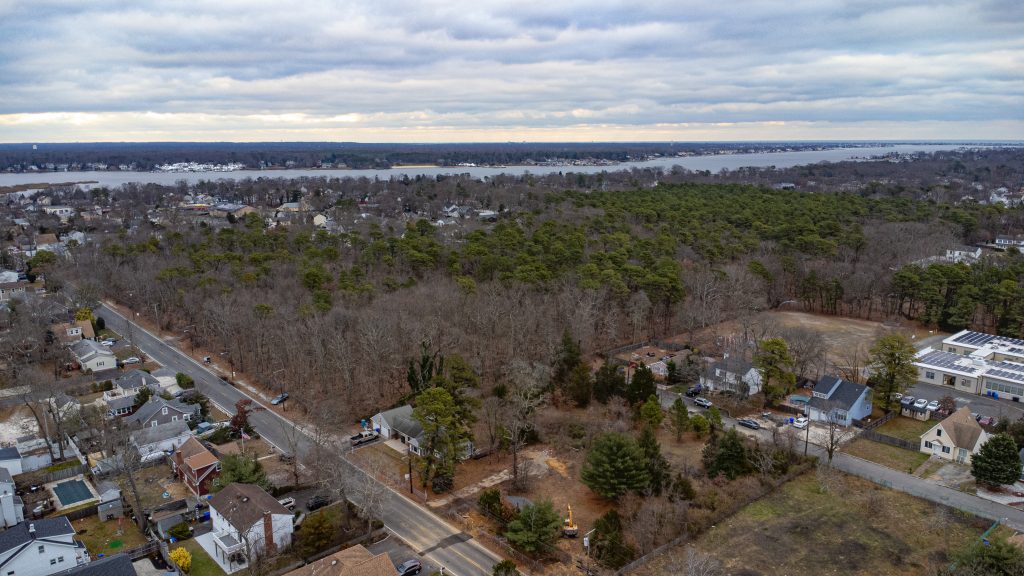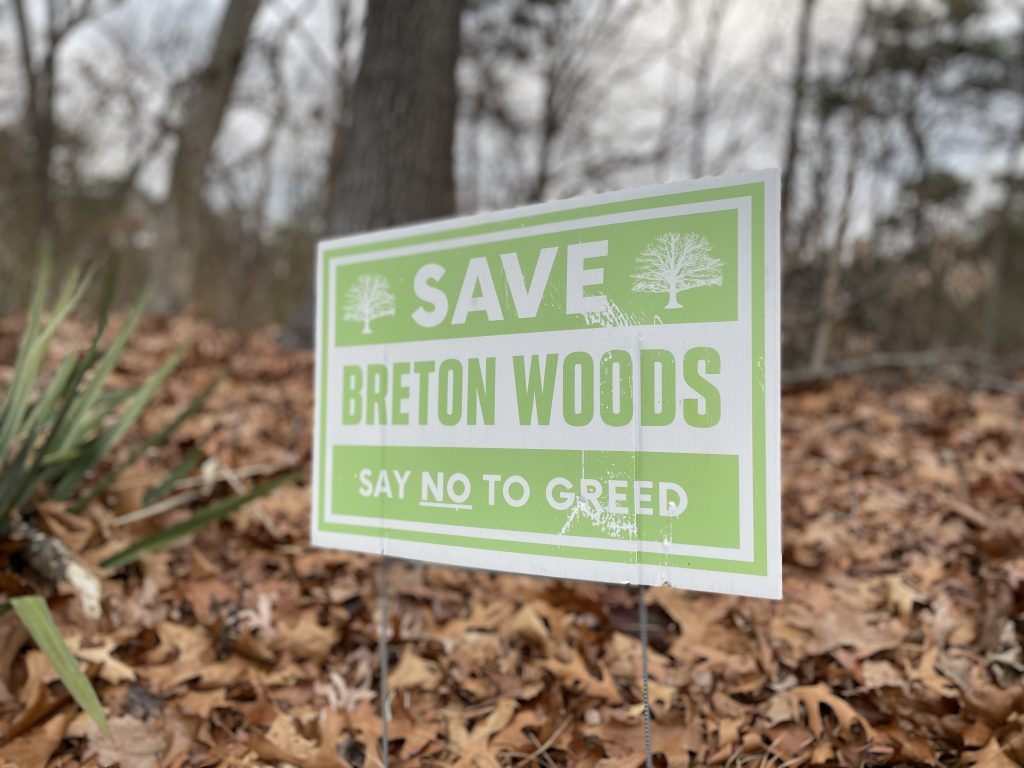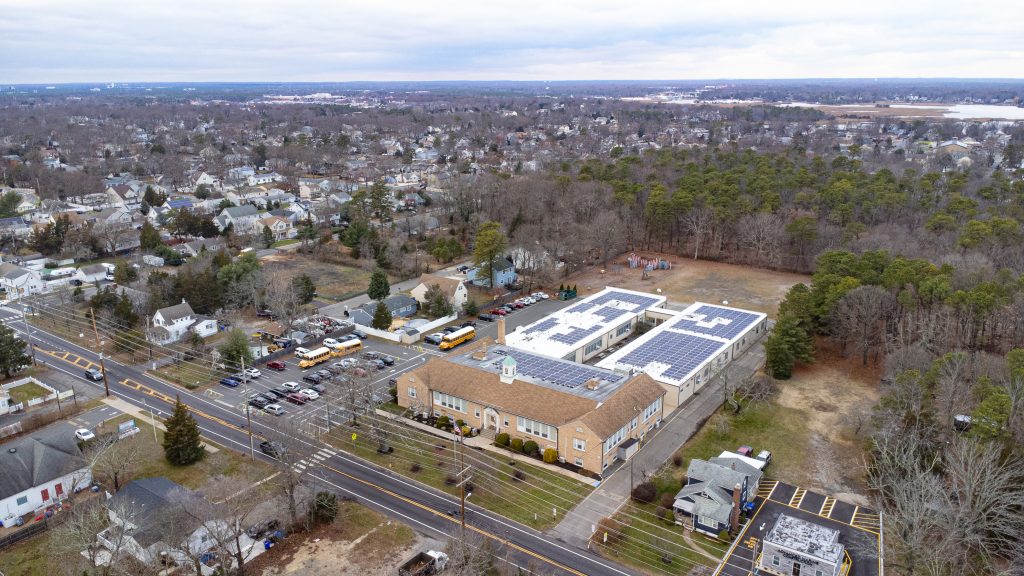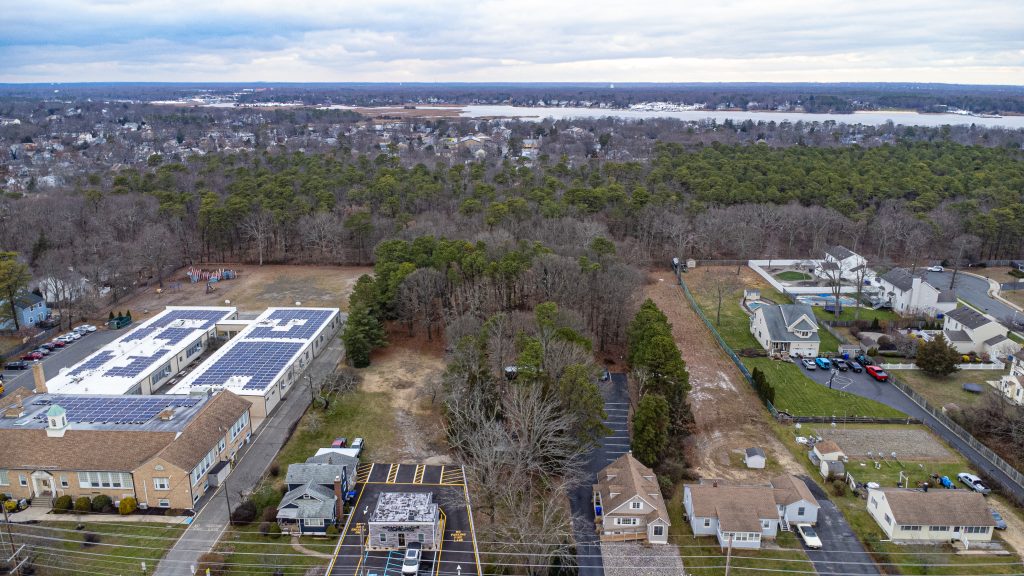Over three hours of testimony before Brick Township’s planning board Monday night resulted in the proposal for 59 homes to be built in a forested parcel in the township’s Breton Woods section heading into 2023.
In what the township’s planning board attorney compared to a “war of attrition,” the legal counsel for Texas-based homebuilder D.R. Horton and a group of land use professionals squared off against residents and an attorney representing a number of objectors to the application during cross-examination. Little of note was revealed despite the length of the hearing, which mainly consisted of back-and-forth testimony regarding D.R. Horton’s proposal to use porous pavement in the development, which township officials have said is maintenance-intensive, would carry extra costs and manpower provided by taxpayers, and is not suited for use as a full-on roadway surface.

The Breton Woods property where 59 homes have been proposed as part of a new development, Dec. 2022. (Photo: Daniel Nee)
|
|

The Breton Woods property where 59 homes have been proposed as part of a new development, Dec. 2022. (Photo: Daniel Nee)
“There is absolutely no doubt in my mind that porous pavement has a role in stormwater management,” said Township Engineer Elissa Commins. “I just don’t feel they’re appropriate for municipal roads. I have not yet seen a structural analysis of the pavement that I can verify, nor have I seen an analysis that is signed and dated.”
No other public road in Brick uses the surface type, which consists of an aggregate that allows water to be absorbed through the roadway itself and ultimately into the ground. It was revealed that D.R. Horton’s representatives dug an 80-foot deep bore hole somewhere on the sprawling 30-acre parcel to detect potential aquifer activity, however when asked by a resident where the bore hole was dug, attorney John A. Giunco, representing the developer, refused to answer and told the resident that the data could be obtained by filing an Open Public Records Act request with the township. Shorebeat plans to submit that request in the coming days for a future report.
It had been expected that the board would vote on whether to approve or deny the application at Monday night’s meeting, however D.R. Horton’s professionals submitted modified reports and new documentation which had yet to be reviewed by township officials. This revelation angered Stuart Lieberman, a noted environmental land use attorney who is representing a group of residents and environmental advocates in opposition to the development.
“They have intentionally not submitted plans,” Lieberman exclaimed, speaking to Board Chairman Bernard Cooke. “How, in the world, are we on the same page when you yourselves do not even have a copy of this? It’s not right. We should adjourn – we’re wasting our time.”
“We have been in constant contact with this board,” replied Giunco, further stating that “every town in New Jersey” has adopted stormwater management ordinances that allow for the controversial pavement. Under questioning, however, Giunco’s engineering witness admitted that she had never signed off on such a surface for a public street anywhere else.
Residents gasped when Giunco replied to a member of the public who asked whether porous pavement is “better or worse” than traditional pavement.
“We have to wait, probably, 10 or 20 years or so,” he said.

Osbornville Elementary School, as it backs up to the Breton Woods parcel, Dec. 2022. (Photo: Daniel Nee)

The Breton Woods property where 59 homes have been proposed as part of a new development, Dec. 2022. (Photo: Daniel Nee)
D.R. Horton proposed the porous roadway surface in order to comply with stormwater management requirements. The pavement has become one of the prime areas of contention over the course of three board meetings, and testimony is expected to continue at the next meeting, the date for which could not be determined at Monday’s hearing.
The developer has proposed the construction of 59 single-family homes on the parcel, which is owned by the Roman Catholic Diocese of Trenton. Officials with Brick Township, Ocean County and at least one private organization have openly stated their desire to negotiate a sale of the property so it can be preserved, however the diocese has, thus far, referred the parties to D.R. Horton. Property records, however, indicate D.R. Horton does not own the land, and it remains in the hands of the diocese.
Harold Hensel, the planning board attorney, said a notice advising the public of the next meeting date will be published once it has been determined.

Advertisement
Brick Life
Try, Try Again










